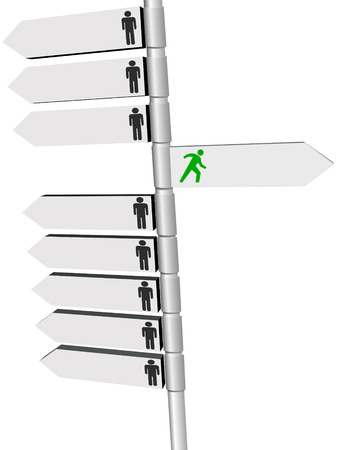Introduction: Chronic Pain in Older Americans
Chronic pain is a major health concern for older adults living in the United States. As the American population continues to age, understanding chronic pain among seniors becomes more important than ever. Chronic pain can affect nearly every part of daily life, from mobility and independence to mental health and social participation.
Prevalence of Chronic Pain Among Older Adults
Recent studies show that about half of Americans over the age of 65 experience some form of chronic pain. This condition is more common among older adults compared to younger populations. The prevalence increases with age, especially among women, people with lower incomes, and certain racial or ethnic groups.
Demographic Trends in Chronic Pain
| Age Group | % Experiencing Chronic Pain |
|---|---|
| 65-74 years | 40% |
| 75-84 years | 50% |
| 85+ years | 60% |
The table above highlights how chronic pain becomes more common as people grow older. Factors such as arthritis, diabetes, past injuries, and other chronic diseases contribute to this increase. Additionally, cultural background can influence how older adults perceive pain and seek help.
Public Health Significance
Chronic pain does not just affect individuals; it also impacts families, healthcare systems, and communities. It leads to higher healthcare costs, increased use of medications, and greater risk of depression and isolation. Addressing chronic pain among older Americans is critical for promoting healthy aging and reducing the burden on public health resources.
2. Cultural Attitudes Toward Pain and Aging
How American Values Shape Perceptions of Chronic Pain
In the United States, cultural values play a big role in how older adults experience and talk about chronic pain. Many Americans grow up with strong beliefs about independence, self-sufficiency, and pushing through discomfort. These ideas can make it hard for older people to admit when they are in pain or need help.
Key Cultural Values Impacting Older Adults
| Cultural Value | Impact on Chronic Pain Reporting |
|---|---|
| Independence | Older adults may avoid asking for help or using assistive devices, fearing it shows weakness or loss of autonomy. |
| Stoicism | There is an expectation to “tough it out,” leading many to underreport pain or avoid seeking treatment. |
| Stigma Surrounding Aging | Pain is often seen as a normal part of getting older, so some may feel their complaints will be dismissed or ignored. |
Real-Life Examples
- Martha, age 74: She feels that telling her family about her arthritis pain would be a burden, so she keeps quiet and tries to manage on her own.
- John, age 68: He believes needing help means he’s “getting old,” so he hides his back pain and avoids using a cane, even if it makes walking harder.
The Challenge for Rehabilitation Professionals
Because of these attitudes, rehabilitation specialists often find that older patients delay seeking care until pain becomes severe. This delay can make treatment more complicated and recovery slower. To provide effective support, rehab professionals must understand these cultural perspectives and work to build trust with older patients. They can encourage open communication by validating patients feelings and assuring them that seeking help does not mean giving up independence.

3. Barriers to Effective Pain Management
Systemic Barriers in Healthcare Access
Older Americans often face significant challenges when trying to access pain management and rehabilitation services. One of the biggest hurdles is the healthcare system itself. Many older adults rely on Medicare, which may not always cover the full range of pain management or rehabilitation options, such as physical therapy or alternative treatments. Long wait times, complex insurance paperwork, and limited transportation can make regular appointments difficult.
| Systemic Barrier | How It Impacts Older Adults |
|---|---|
| Insurance Limitations | Restricts access to certain therapies or medications |
| Transportation Issues | Makes attending appointments challenging, especially in rural areas |
| Provider Availability | Shortage of specialists trained in chronic pain and geriatric care |
Communication Barriers Between Providers and Patients
Clear communication is essential for effective pain management, but it is not always easy for older Americans. Some may have hearing or cognitive difficulties that make it hard to describe their pain or understand medical advice. Healthcare providers may also use medical jargon that is confusing. Cultural differences can further complicate conversations about pain, with some older adults feeling uncomfortable discussing their symptoms openly.
Common Communication Challenges
- Seniors may underreport pain due to beliefs that pain is a normal part of aging.
- Language barriers exist for those whose first language is not English.
- Cultural norms might discourage expressing discomfort or asking questions.
Cultural Beliefs and Attitudes About Pain
Cultural perspectives strongly influence how older Americans experience and report chronic pain. In some cultures, there is a stigma attached to complaining about pain or seeking help for it. Others may prefer home remedies over professional healthcare services. These beliefs can prevent individuals from accessing the support they need, resulting in untreated or poorly managed pain.
| Cultural Factor | Impact on Pain Management |
|---|---|
| Stigma around pain expression | Seniors might minimize or hide their symptoms |
| Preference for traditional remedies | Delays seeking medical or rehabilitative care |
| Lack of trust in the healthcare system | Avoidance of formal treatment options |
The Role of Family and Community Support
Family members often play a key role in helping older adults manage chronic pain. However, if family caregivers lack knowledge about available resources or hold cultural beliefs that discourage medical intervention, this can become another barrier to effective care. Support groups and community organizations can help bridge these gaps by providing education and connecting families with resources.
4. Opportunities for Culturally Responsive Rehabilitation
Understanding Cultural Diversity in Chronic Pain Management
Older Americans come from many different cultural backgrounds, and their beliefs about pain and health can strongly affect how they manage chronic pain. For example, some may view pain as a normal part of aging, while others might see it as something that should be treated right away. These views often depend on family traditions, religious beliefs, and community values. To help older adults more effectively, rehabilitation professionals need to recognize and respect these cultural differences.
Strategies for Culturally Sensitive Rehabilitation
Rehabilitation programs can be more successful when they are tailored to each person’s background and preferences. Here are some strategies that can help:
| Strategy | Description | Example |
|---|---|---|
| Personalized Communication | Use clear language, avoid medical jargon, and respect preferred languages. | Providing materials in Spanish or Mandarin for those who speak these languages at home. |
| Family Involvement | Include family members in therapy sessions to support the patient’s goals. | Inviting adult children to join discussions about home exercise routines. |
| Cultural Awareness Training | Educate rehab staff about different cultural beliefs regarding pain and healing. | Workshops that teach about Native American views on traditional healing practices. |
| Flexible Care Plans | Adjust rehab plans based on dietary restrictions, religious practices, or daily routines. | Scheduling therapy around prayer times or fasting periods. |
| Community Partnerships | Work with local organizations that serve specific cultural groups. | Partnering with African American churches or Asian community centers for outreach programs. |
Innovations in Rehabilitation for Diverse Older Adults
The field of rehabilitation is always evolving to better meet the needs of diverse populations. Technology like telehealth makes it easier for people who live far from clinics or have limited mobility to access care. Group programs led by bilingual therapists can also build trust and understanding among participants. Additionally, using culturally meaningful activities—like dance, gardening, or traditional crafts—can make rehabilitation more enjoyable and relevant to older adults’ lives.
The Role of Trust and Respect in Rehabilitation Success
Culturally responsive care is not just about translating materials or celebrating holidays. It’s about building genuine relationships based on trust and mutual respect. When older adults feel understood and respected, they are more likely to stick with their rehabilitation programs and see positive results. Listening carefully to each person’s story helps professionals design care plans that truly fit their unique needs.
5. Future Directions and Policy Implications
Expanding Research on Chronic Pain in Diverse Older Adults
Chronic pain affects many older Americans, but different cultural backgrounds can shape how pain is experienced, reported, and managed. Future research should focus on understanding these differences more deeply. For example, studies could explore how beliefs about pain differ among African American, Hispanic, Asian American, and Native American seniors compared to non-Hispanic white seniors. This kind of research can help us design better care plans that fit the unique needs of each group.
| Cultural Group | Common Pain Beliefs | Preferred Management Approaches |
|---|---|---|
| African American | Pain may be viewed as a test of faith or strength | Faith-based support, community resources |
| Hispanic/Latino | Pain sometimes seen as a normal part of aging or family life | Family involvement, traditional remedies |
| Asian American | Pain may be under-reported due to cultural values around stoicism | Holistic practices, respect for authority figures in healthcare |
| Native American | Pain may be understood through spiritual beliefs or connection to nature | Traditional healing, community support |
| Non-Hispanic White | Pain often described directly and openly to providers | Medical interventions, self-management programs |
Improving Education for Healthcare Providers and Families
Healthcare professionals need more training in cultural competence and communication skills to better understand their patients’ experiences with pain. Educational programs should include real-life scenarios from diverse communities and practical tips for talking about pain with older adults from different backgrounds. It’s also important to provide families with information in their preferred language and format so they can support their loved ones effectively.
Key Educational Strategies:
- Culturally tailored workshops for providers and caregivers
- Bilingual educational materials on pain management options
- Community outreach events in partnership with local organizations
- Online resources that are easy to access and understand
Policy Changes to Support Better Pain Management and Rehabilitation Outcomes
There are opportunities for policy makers to improve chronic pain care for older Americans from all walks of life. Some promising directions include:
- Increasing Funding for Culturally Relevant Research: More grants can support studies that look at how culture shapes pain perception and treatment preferences.
- Expanding Access to Multidisciplinary Pain Care: Policies can encourage insurance coverage for services like physical therapy, counseling, traditional healing practices, and community health workers.
- Supporting Interpreter Services: Ensuring that non-English speaking seniors have access to qualified interpreters during medical visits helps prevent misunderstandings about pain symptoms and treatments.
- Promoting Community-Based Rehabilitation Programs: Local programs led by people who share participants’ cultural backgrounds can make rehabilitation more approachable and effective.
- Addressing Health Equity: Policies should focus on closing gaps in care related to race, ethnicity, language, income, and geography.
A Look Ahead: Working Together for Inclusive Care
The path forward calls for teamwork among researchers, healthcare providers, families, policymakers, and community leaders. By considering cultural perspectives at every step—from research design to clinical care to policy decisions—we can create a future where all older Americans receive respectful, effective support for managing chronic pain.


